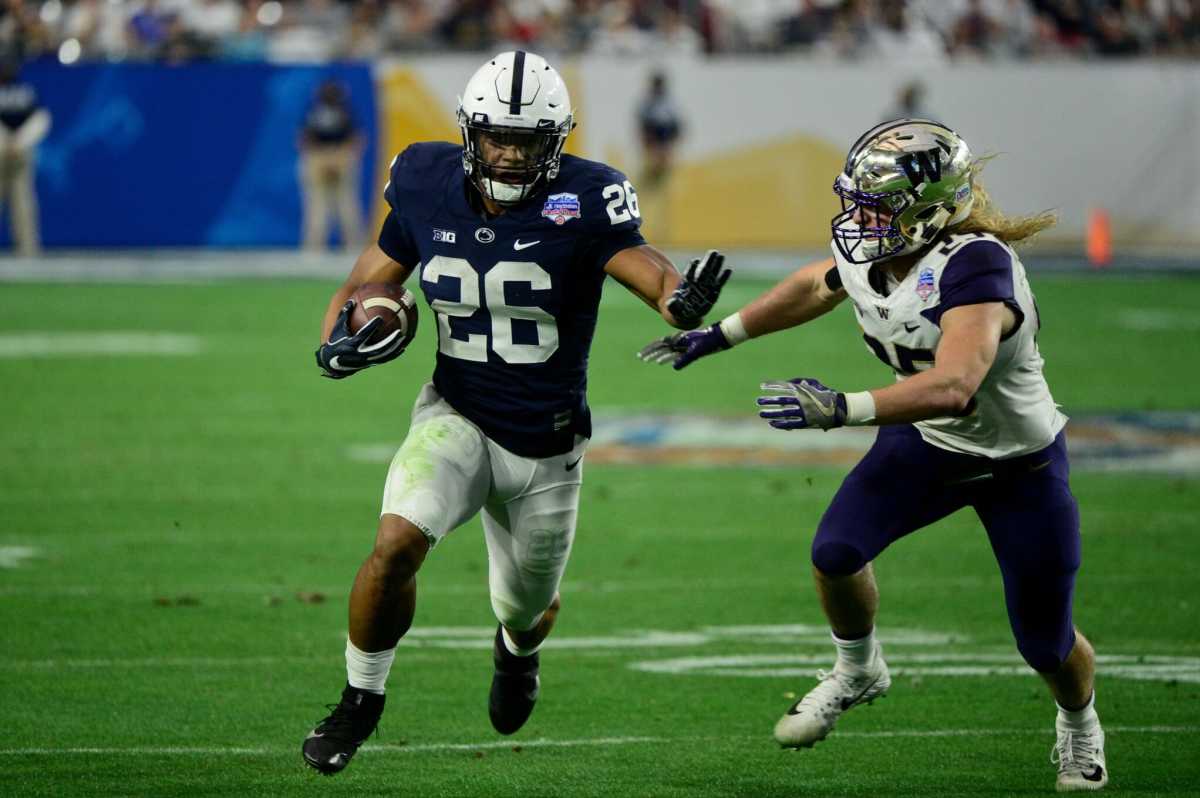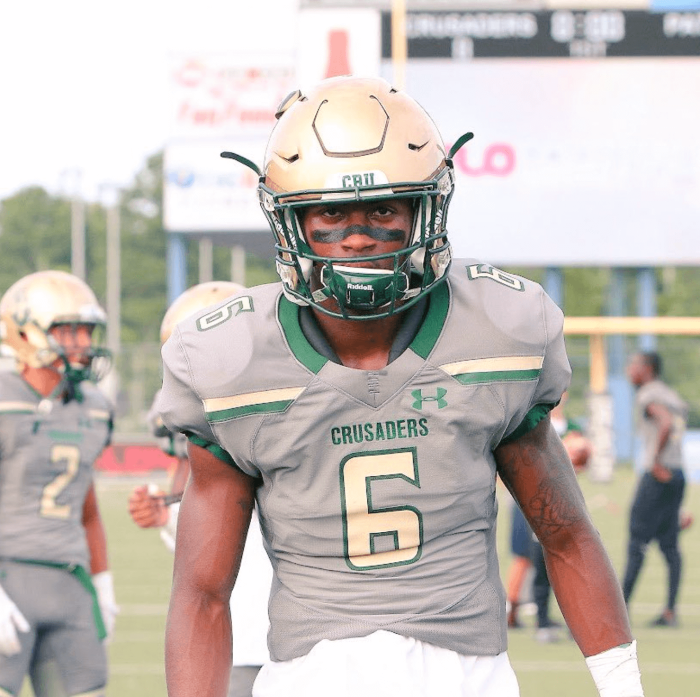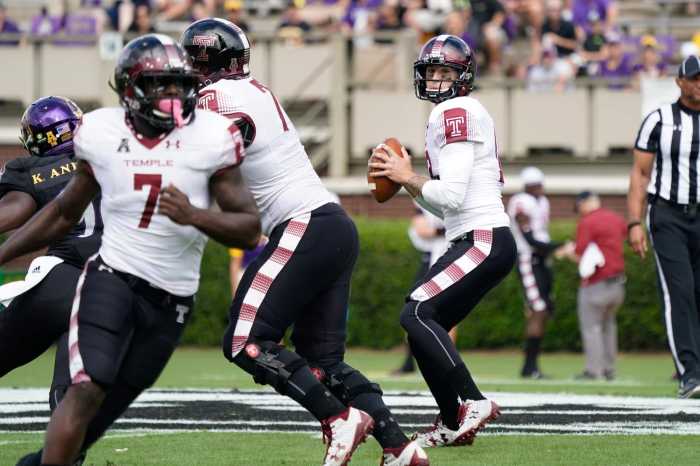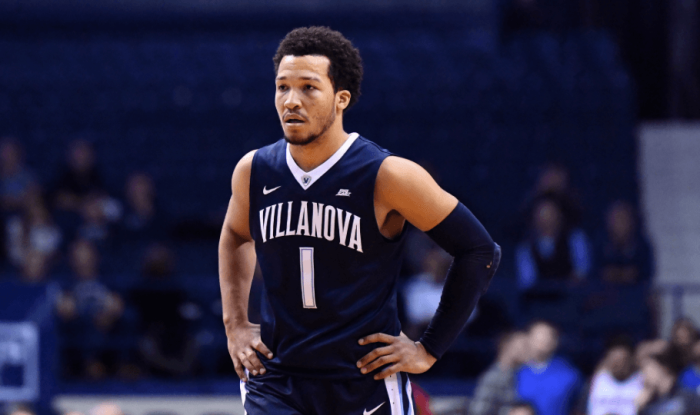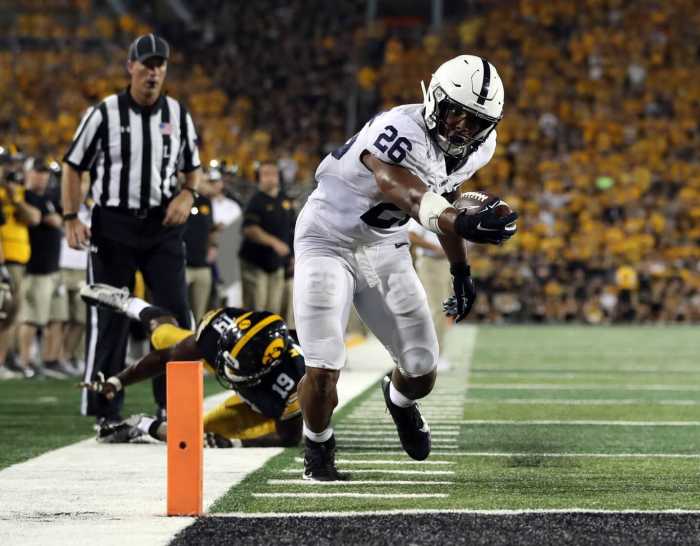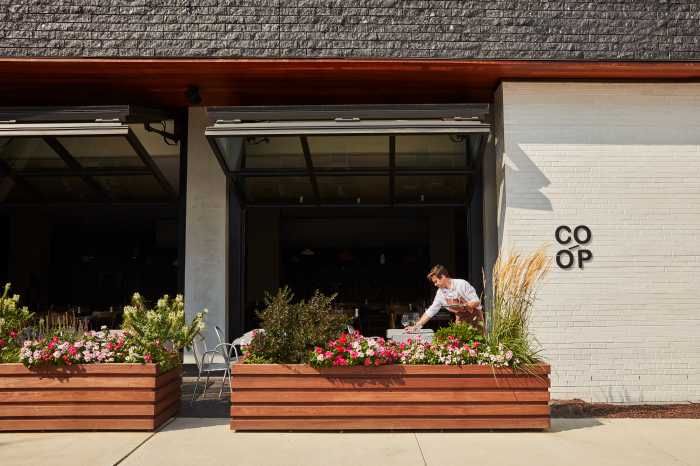When it comes to positional needs, it seems that nearly every team, every year needs a running back. Whether a team is looking for its next feature back, or a complementary piece to pair with the team’s existing starter, running back is a position of need all the time. That’s likely because it’s seemingly the highest position of flux from year to year. Running backs drop, sometimes off the face of the planet, from one season to the next, as miles add up and their bodies wear down from the punishing hits of 200-plus carry season. It comes as little surprise that by the time a running back is 30-years-old, they’re considered over-the-hill. Very infrequently does a runner like Frank Gore exist, who defies age, usage and wear-and-tear to remain productive into his 30’s.
Even during a two year stretch in the not-so-distant-past, when no running backs were taken in the first round, ball carriers came off the board in high numbers. Last year’s Draft produced 30 picks at the running back spot alone. While the shear number of running backs drafted in 2018 may not be as great as it was last year, the talent level hasn’t lessened.
Let’s take a look at which five running backs Tyler and Liam believe will make the biggest impact in the NFL in this week’s edition of the Philly Sports Network NFL Draft Rankings.
Tyler’s Top Five
5. Royce Freeman, Oregon
It’s easy to forget about Royce Freeman among the nation’s best runners seeing he seems to be one of those guys that was in college for an eternity. Freeman finished up his Ducks’ campaign as the school’s leading career and single season rusher, ousting the likes of LeMichael James, Kenjon Barner and Jonathan Stewart, eclipsing 5,600 career rushing yards. Freeman holds the Oregon record for most career rushing touchdowns, finding the endzone 60 times in four seasons in Eugene. He also may get lost in the fold this season since the top two rushers have garnered all the attention over the last 12 months. Freeman carried the football nearly 950 times in four years, showcasing his durability. As with many Oregon running backs, Freeman is a tremendous trap runner, as the Ducks utilize a very inside zone heavy scheme. This forced Freeman to be quick and shifty to get around the big interior lineman of the Pac 12. At 234 pounds, Freeman isn’t short on size. He can lower the shoulder and power through runs when necessary. He doesn’t quite have that second level speed, but isn’t slow either. One worry on Freeman is, oddly enough, an aforementioned plus, in the fact that he did carry the ball nearly 1000 times in his career, leading to worry about wear down at a young age. Oregon struggled in protection last season, as evident by the 25 sacks allowed, and as such, it will be interesting to see what Freeman can do behind a sturdy, NFL offensive line. I think any team that drafts Freeman, especially one with an established runners already in the mix, will be generating a terrific one, two combination for 2018. Freeman will likely go in the third round, but could become one of the most accomplished backs in this year’s Draft.
4. Kerryon Johnson, Auburn
Putting Freeman and Johnson as the first two entrants on this list ensures, at least from my perspective, that no Georgia back will crack my top five. I understand that the pair of Sony Michel and Nick Chubb will likely both be top-50 draft picks, but I left them off for one reason in particular: they’ve countered each other all season long. I’m interested to see what the duo can do on their own in the NFL. I don’t know exactly what to expect from Chubb and Michel. I know exactly what we got from Kerryon Johnson last season at Auburn. The first-year starter carried the football 285 times for nearly 1400 yards, adding 18 touchdowns, despite missing two games early in the season. His efforts earned him second-team All-American honors as well as a first-team All-SEC selection. Johnson’s burst of speed into the second level is what makes him stand out among the top backs this year. Think of Johnson’s burst ability as Le’veon Bell minus the patience, for now, at least. Following blockers is something that Johnson can mature into. Johnson is a capable pass catcher out the backfield, as well. This will allow him to remain on the field come third down, extending his opportunities to make a play. His slender build worries me some, but at just 20-years-old, there is still plenty of time to add some pounds in an NFL weight room before the 2018 season begins. As I mentioned, his ability to allow the play to develop isn’t quite there yet. He also seems to enjoy taking on contact, sometimes unnecessarily, instead of attempting to evade the oncoming hit. If a run on running backs occurs, Johnson could become a late first round selection. If not, I’d believe he comes off the board within the first ten picks of day two. His abilities as worthy pass catcher and natural running abilities will make him a hot commodity once the top three backs have been selected.
3. Ronald Jones, USC
Is it odd to claim that a third-team All-American, first-team Pac 12 selection, and a fringe first round selection should be limited to 15 or less carries at the NFL level? Absolutely. But that’s the issue staring Ronald Jones in the face this upcoming Draft, as certain scouts believe he is too thin and would require a carry limit to not overuse him. Despite the size, and the respect I have for many NFL scouts, who have been around the game longer than I’ve been alive, I must vehemently disagree with this assessment. While Jones is in fact of smaller build, he’s an unbelievable athlete with a work ethic second to, well, one. And we’ll get to the beast later on this list. What Jones lacks in size, he makes up for in quick cut ability and elusiveness. The man can flat out move, and shift, on a dime, when needed. He’ll squeeze through tight windows, whn necessary, to gain additional yards. Jones carried the ball 261 times this past season for the Trojans, running for 1550 yards and 19 touchdowns. In his near 600 collegiate carries, Jones coughed up the football just twice. He has the ability to create big plays out of seemingly nothing, and will thrive even against quicker, stronger defenders at the NFL level. Again, the size seems to be the largest concern with Jones, as he weighs in at just about 200 pounds. Jones sometimes finds himself to the line of scrimmage too quickly, not allowing his lanes to open up in front of him. Patient backs succeeds at the next level, and Jones will need to be willing to sit just a second longer to allow things to develop. His talent makes him a first round selection, but his position behind the next two runners may force him out of day one. He could contend for a starting job in week one next year.
2. Derrius Guice, LSU
Correct me if you’ve heard this one before. “Derrius Guice would be the best back in most every other Draft.” I’ve uttered this phrase hundreds of times.In fact, I was so sure about Guice last year, before his injury, that if I were an NFL GM, and Guice was entering the 2017 Draft, I would have been willing to take him in the first round, despite being Leonard Fournette’s backup at LSU. And much like his Tiger counterpat, who was drafted with the fourth overall pick in last year’s Draft, despite missing time in 2016 to injury, Guice wasn’t fully healthy in 2017. That doesn’t matter to me. At his best, Guice is a first round selection, without question. Guice picked up 1251 yards and 11 touchdowns this past season while still returning to true form. Despite not being 100 percent, Guice still earned second-team All-SEC honors. Guice is a dominantly physical runner who possesses an unbelievable combination of size and speed. His footwork is just as polished as Jones’, but Guice may have even more explosive play ability. He’ll hit a hole and will be gone, deep into the second level, on every opportunity he can get. Many are comparing Guice to Marshawn Lynch, who has outlived career expectations with his style of running. While Guice can explode into open space, he will sometimes struggle with one-on-one battles around the tackles, as linebackers at the NFL level could chase him to the edge and wrap him up. He also isn’t a tremendous pass catcher, needing to become more polished in order to remain on the field on third downs. Guice should go in the first round of this year’s Draft. Will he, is a separate question. He will, almost assuredly, be the second back off the board, and could find his way onto a roster midway through the first round.
1. Saquon Barkley, Penn State
Alright, fine, I’ll say it: Saquon Barkley is the best running back in the nation. Are you happy, Penn State fans? Well, you should be, because it isn’t a biased opinion to say that Barkley is the clear-cut number one back this class has to offer. How good is he? Some scouts are saying he’s the most sure-fire pick in this year’s Draft. Other are going even further, saying he’s one of the most cant-miss prospects of the last ten years. He’s being compared to Barry Sanders. Lofty comparisons, but if any college back can accommodate them, it’s Saquon Barkley. Barkley carried the football 671 times in his illustrious three year career, rushing for over 3800 yards and 43 touchdowns. Those numbers are good for second and first in Penn State history, respectively. Unlike some of the other top rushers on this list, Barkley is a physically imposing running back, weighing in at 223 pounds. You’ve likely seen his lifting videos, in which Barkley put up massive amounts of weight squatting and on the clean press. His size doesn’t slow him down, however, as Barkley is the most elusive back in this year’s Draft. His ability to quickly stop without hesitation, change fields, and progress is flawless. The junior back has an innate ability to make plays appear out of thin air. The play is never over when the ball is in Barkley’s hands until the whistle blows. Barkley is also one of the better pass catchers of this class, as he and Trace McSorley linked up 54 times this season. He’ll also be able to, and likely want, to return kicks, just as he did at Penn State. He took two kickoffs to the endzone in 2017. Barkley isn’t the most polished pass blocker, and could use some work to succeed at that in a pro-style, NFL offense. He’ll also be asked to run less zone read in the NFL, something he did at Penn State frequently. Barkley may need to turn up field more quickly at the next level, as his athleticism won’t go quite as far as it did in college. Despite a small list of improvements needed to be made, Barkley is the most NFL ready back, and as such, will be taken within the first ten picks, guaranteed, and likely by one of the top five teams.
Running back is always a fun position to evaluate and this year’s class lives up to the hype. A generational talent, some first round sleepers and workhorses embedded deep into the heart of the draft, this year’s budding backfield members are a lot of fun to watch. This ranking was really difficult to finalize…but its not hard to see why with such an array of talent.
Liam’s Top 5:
5 Royce Freeman, Oregon:
Another #5 placing on this for Oregon’s finest is probably just about right in my opinion. The issue many have with former Ducks running backs is that their production rarely carries into the NFL as Tyler mentioned. But with 60 touchdowns in four years and the success that Tyler alluded to, Freeman showed true durability and an ability to do it all. A physical back who could power through tackles and has enough acceleration and burst to punish defenders at the second level, Freeman has all the raw skills you seek in a modern day running back.
4. Ronald Jones, USC:
While his size and lean frame may work against him, Jones is a back who will sting unsuspecting defenses. He’s faced the same criticisms throughout his career and what was different in 2017 was that it was clear he took it onboard. He ran with haste, power and combined that electrifying elusiveness with a new angry style of rushing. Averaging 5.9 yards per carry, the USC back ran for 1,550 yards in his final season with the Trojans, proving that he can mix it up with some stellar defenses in the process. I think with such a plentiful selection of talent this year, the frame concerns are going to naturally arise, but his talent is certainly worthy of being in this list.
3. Sony Michel, Georgia:
Michel is easily one of my favorite backs in this class and for two reasons.
1) He’s deceptively dominant.
2) The world is still sleeping on the Georgia Bulldog.
Averaging 7.9 yards per carry in 2017 for 1,227 yards and 16 scores, Michel has all the potential to be a bell-cow back at the next level, barreling his way through anyone that stands in his path. This much is clear and after a strong combine (40 excluded), he brings that exciting upside without the durability concerns due to Georgia’s never-ending rotation of backs. Michel broke off big runs against big-time competition throughout his career and at 5’11, 234 lbs, he has a bulky frame that he’s able to use well. The world is still sleeping on the blistering bulldog…but that won’t last very long.
2. Derrius Guise, LSU:
While his 2017 season was hurt by an early injury that he later bounced back from and progressively became more and more impressive, Guise followed his 1,251 yard campaign with a solid combine workout. A tough, instinctive runner who has all the strength and speed to match, Guise flashes elite potential whenever you turn on the tape. But if you are to watch any of the footage from 2016, it’s clear Guise contains first-round production. It’s strange to see someone so physically imposing move so easily and possess such impressive footwork, but Guise is everything you look for in a three-down back and then some.
1. Saquon Barkley, Penn State:
Best. Player. In. The. Draft.
The man is a generational talent. Need I say more after Tyler’s incredible synopsis?
Mandatory Credit: Matt Kartozian-USA TODAY Sports

